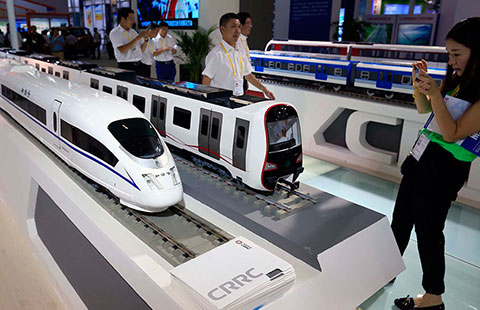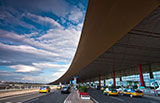China's automotive story is far from over
By Zhu Bin (chinadaily.com.cn) Updated: 2015-09-01 16:48The downswing in passenger vehicle sales in China deepened further in July, with sales of locally-made models dropping by 6 percent on last year.
This second year-on-year decline in a row has seen year-to-date growth tumble to a low of 5.6 percent.
Closer scrutiny of the seasonally adjusted annual rate paints an even grimmer picture, with the selling rate of passenger vehicles falling to 17.7 million units, marking the lowest level in the last 24 months since August 2013.
Meanwhile, further concerns were raised by China Automobile Dealers Association's latest dealer-level index, which reflected a value of 1.65 months for July, barely changed from the 1.68 months seen in June or May's 1.7 months.
The dealer-level destocking process, which had been in evidence during the opening months of the year, ceased in May, although wholesales were seen to slow down markedly during the same period.
These various factors give rise to a number of questions, all of which are preoccupying industry insiders.
Will the Chinese passenger vehicle market continue to slow down?
More worryingly, has the resilient Chinese market finally reached an end-point?
In other words, is this the end of China's automotive boom? To shed light on these troubling questions, we must delve deeper into the complex regional disparities that exist across this vast and developing nation.
During the first half of 2014, registrations of passenger vehicles in China's first-tier and second-tier cities grew by 15 percent on the previous year, and contributed around 40 percent to the total growth seen across the country.
Conversely, during the same period this year, growth in the second-tier cities amounted to a mere 3 percent year-on-year, while the first tier cities experienced an annual decline of 21 percent in registrations, which, together, acted as a drag on overall market growth.
In sharp contrast, when looking at the third to the fifth-tier cities, the pattern is decidedly more consistency, with the year-on-year growth of 18 percent in the first half of last year and of 15 percent in the first half of 2015.
An accurate analysis of these comparisons is critical to our understanding of the prevailing market headwinds, which, in turn, helps shape our forecasts.
The fall in registrations in the first-tier cities during the first half of 2015 was, quite simply, the result of a drag from the city of Shenzhen, which was the last of the first tier cities to impose restrictions on vehicle purchases, applicable from this year onwards.
This trend is set to continue into the second half, and is expected to be followed by mild growth in registrations next year in China's top-tier cities.
Indeed, Shenzhen is likely the witness of the inevitable rebound in registrations, typically seen during the second year of restrictions, while China's other tier-one cities are projected to experience a predominantly flat trend.
However, the situation is more complex in the second-tier cities, where the slowdown in sales can be attributed largely to the twin forces of a ‘payback' from the buying frenzy, which took place during the second half of 2013 and first half 2014, and the ‘holdback' resulting from the current volatility in the stock market.
This dual dynamic triggered a spike in sales during the first half 2014 in a number of the second-tier cities, followed by a leveling off in the second half of last year and, in recent months, by a downward dip.
Looking ahead, we believe that most of the pent-up sales will be revived during the fourth quarter 2015 and the first quarter 2016 and, with a comparatively lower base in year-on-year terms, second-tier cities are likely to see far stronger growth in 2016.
On a more positive note, the lower-tiered cities have acted as a pillar supporting overall growth, thus far, in 2015.
Going forward, although the economic slowdown poses a risk to growth momentum, we are of the view that double-digit growth is entirely possible during the second half of this year and into next year, given the low vehicle parc density and inexorable rise in household income in these lower-tiered cities.
Taking all of these factors into account, and in spite of the major downward adjustment, for the second consecutive month, to our forecast for this year as a whole, our assessment is that the passenger vehicle market could turn a corner during the final quarter of 2015 to come back on track, and be followed by annual growth of a high single-digit during the course of 2016. In short, China's automotive story is far from over.
The author is China forecasting manager at LMC Automotive. Contact the writer at bzhu@lmc-auto.com.
- 2015 China International Fair for Investment and Trade kicks off in Xiamen
- China's commodity imports robust in Jan-Aug period
- China stocks rebound 2.92%
- 2015 China box office already past 2014 total
- China foreign trade decline widens in August
- Interview: JP Morgan's senior executive bullish on China
- Innovation, development the focus for NZ mayors
- Lives of freelancers

















